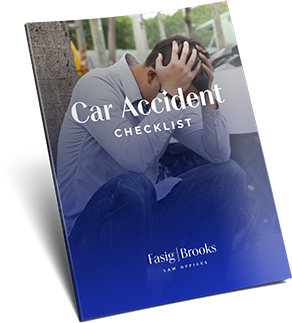An important factor in determining the value of a herniated disc case is whether the plaintiff suffered from a pre-existing condition before the crash. In 100% of the cases we studied from Orlando, Florida, the defendant hired an “expert” who alleged that the plaintiff’s herniated disc was not caused by the crash but was due to degenerative changes in the plaintiff’s spine. In my experience, most insurance companies have doctors in their pockets who will blame degenerative changes as the cause for a plaintiff’s herniated disc, no matter the facts of the case. For instance, I just took the deposition of a neurosurgeon, hired by the defense insurance company in a car crash case, who formed the opinion that my client’s surgery was related to degenerative changes in her spine and not related to her crash. My client was in her thirties at the time of the crash and had NEVER suffered lower back pain before the crash. Yet after the crash, she went by ambulance to the emergency room with severe lower back pain. Her back pain remained severe over the span of 50 doctor’s visits until she underwent surgery. Yet, the neurosurgeon, who was getting paid $1,500 per hour to testify and was on the insurance company’s payroll for multiple cases, testified under oath that the crash had nothing to do with the herniated disc. This is the type of situation we see every day.
Defense attorneys often make the mistake of assuming a plaintiff with pre-existing injuries is less likely to prevail at trial. However, cases involving plaintiffs with known pre-existing conditions, other than degenerative changes, are NOT excluded from receiving a plaintiff-favored verdict and, in fact, may have a higher likelihood of a plaintiff’s verdict than cases not involving pre-existing conditions. In our study, plaintiffs with pre-existing conditions were 3.3% more likely to receive a plaintiff-favored verdict than plaintiffs without pre-existing conditions. Statistically, considering a reasonable margin of error, this is not a huge difference. My experience, however, is that plaintiffs are more likely to win if they have pre-existing conditions, because jurors understand that pre-existing conditions are easily aggravated by trauma. Pre-existing conditions are particularly helpful in car crash cases where there is little visible damage to the vehicles. The existence of a pre-existing condition explains why the plaintiff would suffer severe pain from a relatively minor impact.
A skilled trial lawyer knows how to maximize the value and minimize the negative impact of a plaintiff’s pre-existing condition. The first, and most important, step is to inform all of the plaintiff’s treating doctors of the plaintiff’s pre-existing conditions, so that those doctors can render informed opinions about how and to what extent the incident aggravated the plaintiff’s pre-existing injury. In the client’s initial appointment with any treating doctor after the incident, the client should disclose the pre-existing condition to the doctor, and should not attempt to sugar coat it or downplay the pre-existing condition. If the client fills out any paperwork upon a doctor’s appointment after the incident, the client should disclose the pre-existing condition in that paperwork, so that it’s documented. In our client’s initial paperwork with my firm, I make my new clients sign a document stating that they agree to inform their doctors of any pre-existing conditions. I have seen too many plaintiffs ruin perfectly good cases because they failed to inform their treating doctors of prior injuries. The plaintiff’s treating doctors should be given a copy of the plaintiff’s prior medical records before rendering any opinions. Any portion of those prior medical records indicating pre-existing injuries should be highlighted and tabbed so the doctor’s attention is directed toward it.
A pre-existing condition can also help a herniated disc case in a situation where a MRI study was done before the injury-causing incident and another after the incident. A MRI study is a picture taken of the plaintiff’s spine. This allows the treating doctors to compare the client’s spinal column before the incident to after the incident, and often results in objective evidence we can use to show that the plaintiff’s pre-existing conditions were worsened as a result of the incident. I had one case where my client had a MRI study done less than a week before a rear-end vehicle crash. He had another one done immediately after the crash, showing a much more severe injury than before the crash. We used this evidence to negotiate a very favorable settlement for my client.
In situations where MRI studies are not available from before the incident, we present evidence of activities the plaintiff did before the incident that would indicate a healthy spine. This type of evidence can debunk a defendant’s claim that the plaintiff’s condition after the incident was due to degenerative changes in the spine. For instance, I tried a case a couple months ago, where my client was taking up camping as a hobby before he was rear-ended by another driver. He had purchased a high-tech back pack and had gone on a few challenging camping trips, never complaining about back pain until after the car crash. When the defense alleged he suffered from pre-existing degenerative changes in his spine, the defense’s allegations fell flat, because my client’s actions before the incident indicated that his back was perfectly healthy. We ended up with a $104,000 verdict for my client who had a herniated disc without surgery.
The goal for the plaintiff’s lawyer is to turn the pre-existing condition into an asset as opposed to a liability for the case. We do this through the testimony of treating doctors, radiologists, and biomechanical engineers who explain to the jury how the plaintiff was more vulnerable to the defendant’s carelessness because of the pre-existing condition. We utilize one of the standard jury instructions, which we can present and argue to the jury, which says:
501.5 OTHER CONTRIBUTING CAUSES OF DAMAGESa. Aggravation or activation of disease or defect:
If you find that the (defendant(s)) caused a bodily injury, and that the injury resulted in [an aggravation of an existing disease or physical defect] [or] [activation of a latent disease or physical defect], you should attempt to decide what portion of (claimant’s) condition resulted from the [aggravation] [or] [activation]. If you can make that determination, then you should award only those damages resulting from the [aggravation] [or] [activation]. However, if you cannot make that determination, or if it cannot be said that the condition would have existed apart from the injury, then you should award damages for the entire condition suffered by (claimant).
Bottom line, a skilled attorney can make your pre-existing condition an asset to your case as opposed to a liability. A pre-existing condition needs to be taken into account when determining the proper value of a case, but it does not necessarily mean that the value of the case should be lower due to the pre-existing condition. The effect of the pre-existing condition should be considered along with all of the other nuances involved in determining the value of a case. As always, I am available to discuss case value with any attorney or potential client who picks up the phone. Please call me at (850)224-3310 if you would like to discuss a particular case.





